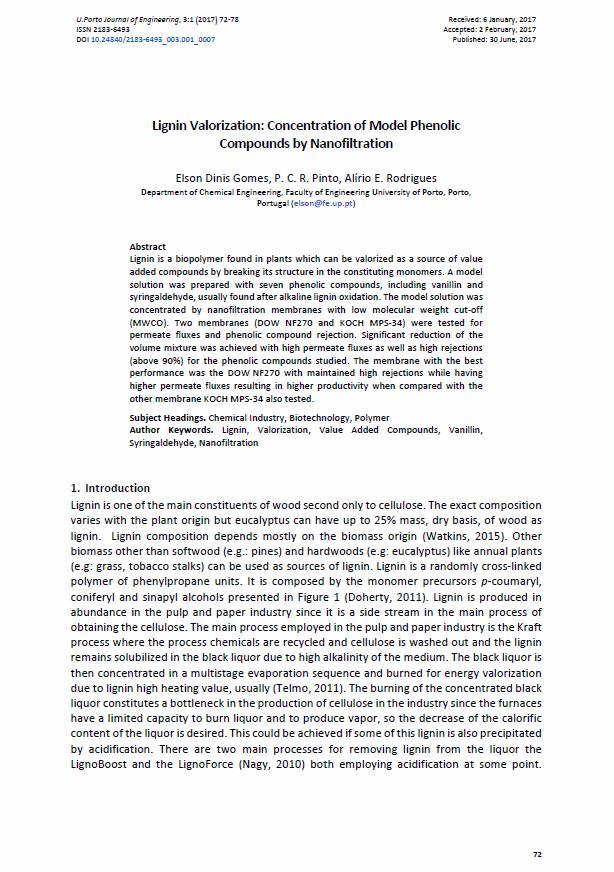Lignin Valorization: Concentration of Model Phenolic Compounds by Nanofiltration
Main Article Content
Abstract
Lignin is a biopolymer found in plants which can be valorized as a source of value added compounds by breaking its structure in the constituting monomers. A model solution was prepared with seven phenolic compounds, including vanillin and syringaldehyde, usually found after alkaline lignin oxidation. The model solution was concentrated by nanofiltration membranes with low molecular weight cut-off (MWCO). Two membranes (DOW NF270 and KOCH MPS-34) were tested for permeate fluxes and phenolic compound rejection. Significant reduction of the volume mixture was achieved with high permeate fluxes as well as high rejections (above 90%) for the phenolic compounds studied. The membrane with the best performance was the DOW NF270 with maintained high rejections while having higher permeate fluxes resulting in higher productivity when compared with the other membrane KOCH MPS-34 also tested.
Downloads
Article Details
Authors who publish with this journal agree to the following terms:
- Authors retain copyright and grant the journal right of first publication with the work simultaneously licensed under a Creative Commons Attribution License that allows others to share the work with an acknowledgement of the work's authorship and initial publication in this journal.
- Authors grant the journal the rights to provide the article in all forms and media so the article can be used on the latest technology even after publication and ensure its long-term preservation.
- Authors are able to enter into separate, additional contractual arrangements for the non-exclusive distribution of the journal's published version of the work (e.g., post it to an institutional repository or publish it in a book), with an acknowledgement of its initial publication in this journal.
- Authors are permitted and encouraged to post their work online (e.g., in institutional repositories or on their website) prior to and during the submission process, as it can lead to productive exchanges, as well as earlier and greater citation of published work (See The Effect of Open Access).

